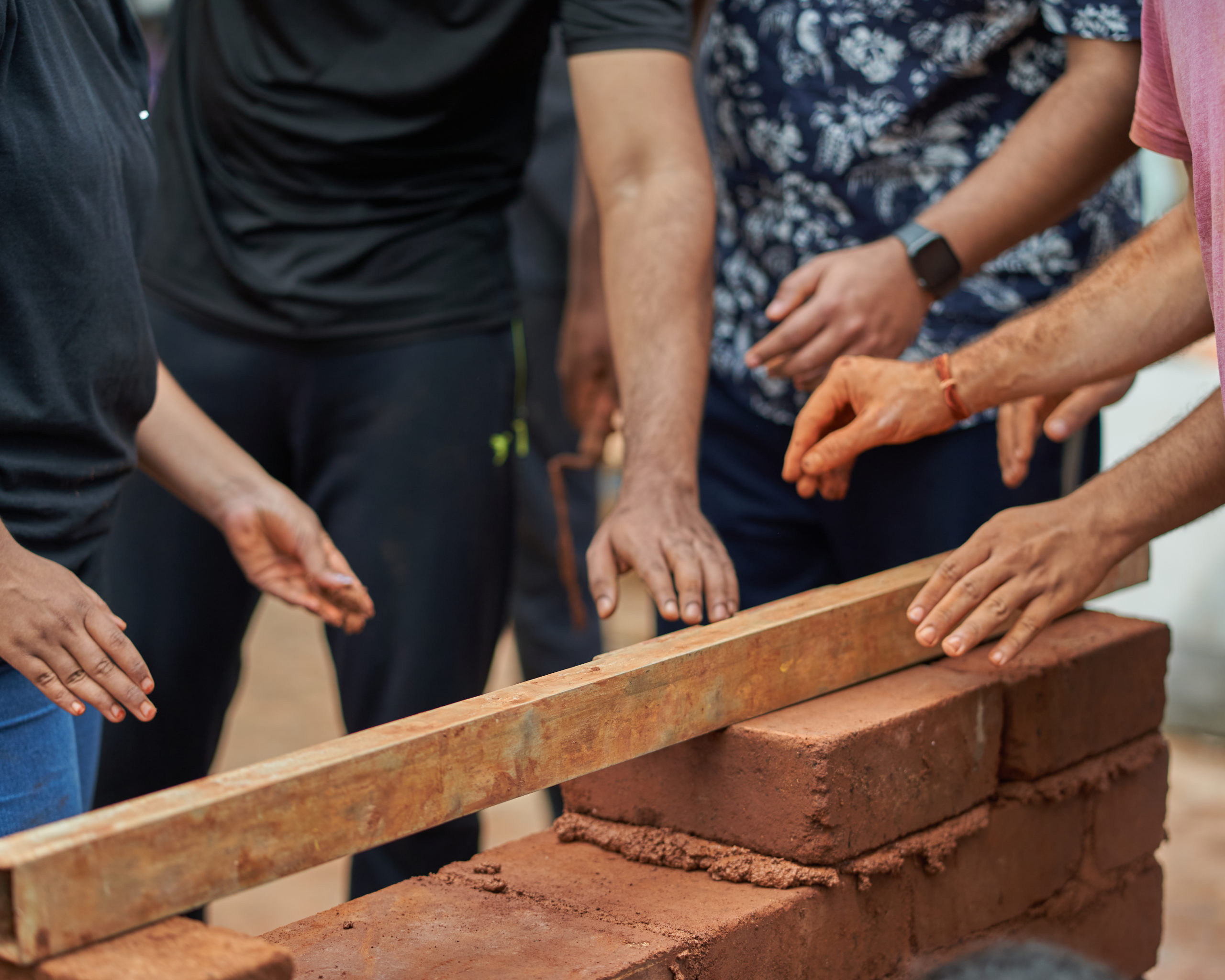Earthen Architecture
The aim of this sustainable architecture workshop is to ignite curiosity about environmentally conscious construction, emphasizing the use of local and sustainable building materials, the climatic suitability of buildings, and the social dimensions of labor in construction. Throughout this workshop, participants will acquire knowledge of both traditional and modern techniques of constructing with earth, delving into the fundamental principles of soil identification, and exploring how different soils can be utilized for earthen construction. The hands-on workshop experience includes constructing walls using both traditional raw earth methods (e.g., adobe and cob) and contemporary stabilized techniques (e.g., stabilized rammed earth and compressed stabilized earth block or CSEB).
Furthermore, participants will have the opportunity to immerse themselves in the diverse architectural expressions found in Auroville, gaining insights from the learning experiences embedded in the building process.
Context
Earthen Architecture embodies the use of sustainable resources to build and coexist harmoniously with nature. Earth as a building material has a rich history, with the oldest standing earthen building dating back approximately 3300 years. For example, the Ramasseum, constructed with adobes around 1,300 BC in the ancient city of Thebes, stands as a testament to this enduring practice. In India, the Tabo Monastery, built in 996 AD in the Spiti Valley, serves as the oldest earthen building.
Collaborator: Auroville Earth Institute
Key takeaway
Gain insights into environmentally conscious construction through the use of earth
Explore various architectural expressions present in Auroville.
Modalities
Duration: half a day to 3 days
Modality: online & offline
Audience: age 18+
Suggested group size: 20-50
To join a scheduled workshop visit here.
To see all our upcoming workshops here.

